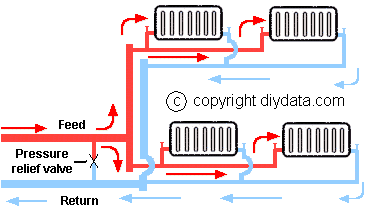I suspect this is a silly question, but I'm going to go ahead and ask anyway.
In a normal parallel pipe central heating installation, from what I understand the last radiator has the supply into one valve and the return from the other valve. For all other radiators the supply and return pipes are tee'd off, similar to the following:

My question about this setup is that if the last radiator on the circuit is turned off, doesn't that mean water will "sit" in the supply and return pipes between the previous radiator and the last radiator and couldn't this allow silt to form in those pipes, especially if they are plastic with inserts! For example, if the last radiator was a dual fuel towel rail and so one of the valves was closed off to the CH for the Summer months when the electric element was used to heat it.
Wouldn't it be better if the supply pipe to the last radiator "became" the return pipe? This way, just like any other radiator in the system, if the last radiator is turned off then water will bypass it and return to the boiler, avoiding having (potentially) silty water sitting in the pipes.
I know this is a silly question, but it would be useful to know why the supply pipe doesn't become (feed into) the return pipe at the last radiator.
In a normal parallel pipe central heating installation, from what I understand the last radiator has the supply into one valve and the return from the other valve. For all other radiators the supply and return pipes are tee'd off, similar to the following:

My question about this setup is that if the last radiator on the circuit is turned off, doesn't that mean water will "sit" in the supply and return pipes between the previous radiator and the last radiator and couldn't this allow silt to form in those pipes, especially if they are plastic with inserts! For example, if the last radiator was a dual fuel towel rail and so one of the valves was closed off to the CH for the Summer months when the electric element was used to heat it.
Wouldn't it be better if the supply pipe to the last radiator "became" the return pipe? This way, just like any other radiator in the system, if the last radiator is turned off then water will bypass it and return to the boiler, avoiding having (potentially) silty water sitting in the pipes.
I know this is a silly question, but it would be useful to know why the supply pipe doesn't become (feed into) the return pipe at the last radiator.

